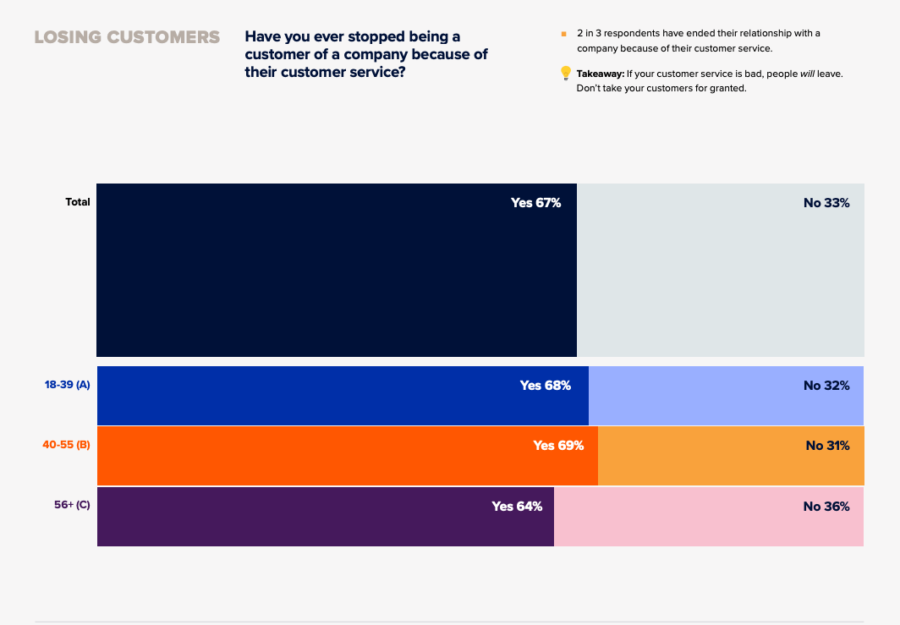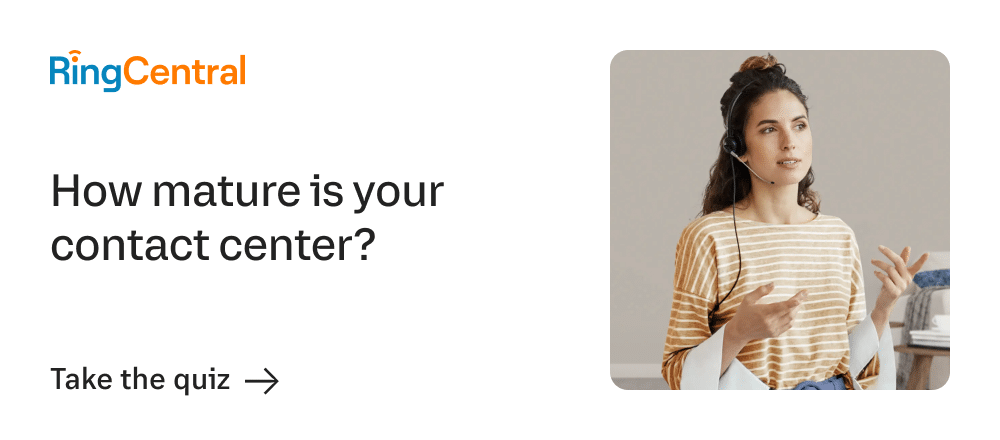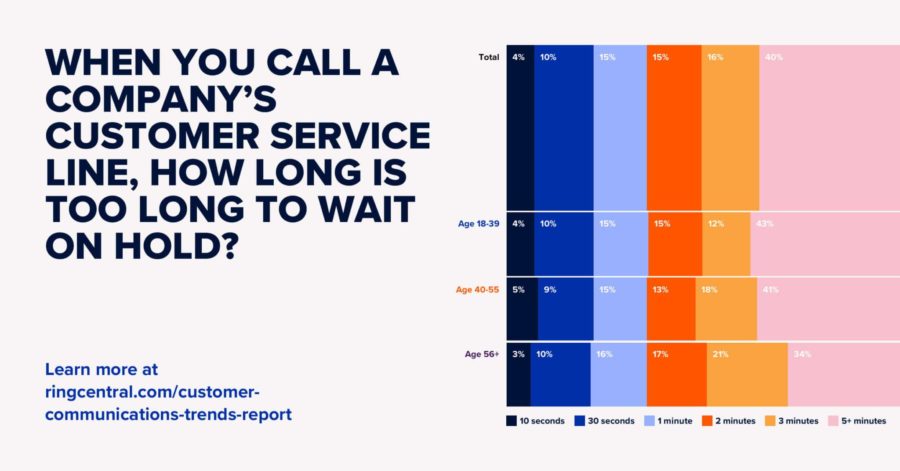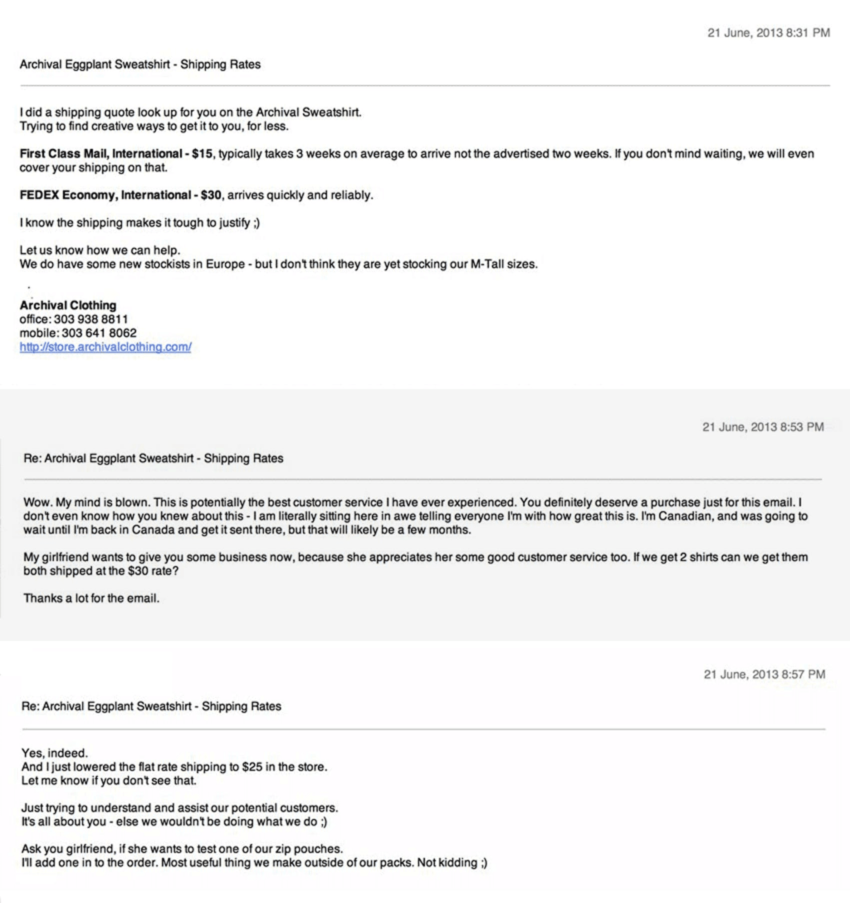Not everyone who comes across your business is going to give you their contact information, just how not every paying customer is bound to be a repeat one.
But a good business will have a clear process which every customer goes through as they build their relationship with you. In other words, you should be defining what your customer lifecycle and journey looks like.
The good news is that customer lifecycles all follow a similar process no matter what business or industry you’re in—there are five universal stages that we’ll cover below. Having a good grasp of what these stages look like for your business enables you to grow the customer base that you already have. After all, 25% to 40% of the total revenues of the most stable businesses come from returning customers.
In this article, we’ll cover:
- The 5 stages of customer lifecycle management
- How to achieve customer lifecycle retention
- 4 key avenues of customer service that’ll help you increase customer retention
How customer-obsessed is your business? Take the quiz to find out.
The 5 stages of customer lifecycle management
1. Reach
This stage is sometimes referred to as “discovery” or “awareness,” and it represents the start of the lifecycle. It involves the initial moments where a potential customer gains awareness of your business or brand. This can be through online search, ads they’ve stumbled across, or by word of mouth. Important at this stage is to track the various touchpoints of these interactions so that you know which search terms, or campaigns are putting you at the forefront of customers.
What you should be tracking:
- Most used search terms driving traffic to your site
- Which online reviews are receiving the most engagement (think Amazon’s “X people found this helpful”)
- Social media posts that are attracting the most attention (through likes, comments, and/or shares)
- How people are hearing about you (through short surveys)
2. Acquisition
If enough interest is sparked from the customer’s initial discovery, they may go on to compare your product or service to other competitors, eventually landing on your site or storefront. In this stage, your focus should be to turn marketing contacts into potential leads. This happens with direct content that’s meaningful and is delivered at the right time. What do we mean by this? Generally, one-size-fits-all email blasts are typically a no-no.
How to tailor your messaging:
- Optimize SEO to make your content local and more visible by using popular search terms and industry-related keywords.
- Address how you are solving the specific problem or pain point that your prospective customer has expressed.
3. Conversion
During this stage, leads become paying customers. Ideally, the exchange is beyond just a monetary one, and customers learn how you’re providing added value. You can help them along in this process by providing tips for how to get started with your product, or by making the onboarding process effortless (for instance, if you’re a SaaS business, let customers import their previous data so that they can pick up immediately from where they left off).
Ways to increase your conversion rate:
- Offer a pricing incentive (coupled with a strong call to action to “buy now”). This aversion to loss nudges potential leads to make the purchase.
- Include social proof by adding testimonials or reviews on your site.
- Create abandoned cart email campaigns to remind visitors that they’re just a step away from checking out.
4. Retention
There’s a lot of options out there for consumers, and this stage focuses on keeping existing consumers as recurring ones. Maintaining communication to make sure the customer is satisfied after their initial purchase helps to nurture your relationship with them over time. The goal is to reduce your churn rate by continuing to provide support even after the customer hands over their money.
We’ll talk more later about how to use customer service to retain customers later, but for now, just know that about two-thirds of customers have left a company because of their customer service:
How to improve retention rates:
- Craft a successful onboarding program with adequate training on how to use the product so customers don’t grow frustrated at first use and abandon shortly after.
- Adopt customer service tools that let people connect with you in ways that are most convenient to them (like through chat, text, or social).
5. Loyalty
The ultimate goal after gaining a regular customer is having them act as a brand ambassador for your business. What does that look like? Someone who spreads awareness of your brand to others, providing position recommendations and driving future leads your way.
How to track loyalty:
- Set up referral program metrics (for instance, if each customer gets a unique referral code to share out, track which customers are gaining you the most contacts and move those customers into a VIP category).
- Ask your customers how much they’ll miss you (quantitatively that is, on a value between 1 (wouldn’t miss at all) to 10 (please do anything but go), and formulate a plan to regain the loyalty of those with lower scored responses.
How to achieve customer lifecycle retention
Using the tips above, you should start to attract a ton of new prospects and convert a high percentage of those leads into customers! Your next step is to focus on extending your existing customer relationships so that both sides of the lifecycle are optimized.
Take a look at this image below (by the way, the stages of this customer lifecycle are slightly different than what’s mentioned above, and that’s because it shows more detail in the grow customers portion):
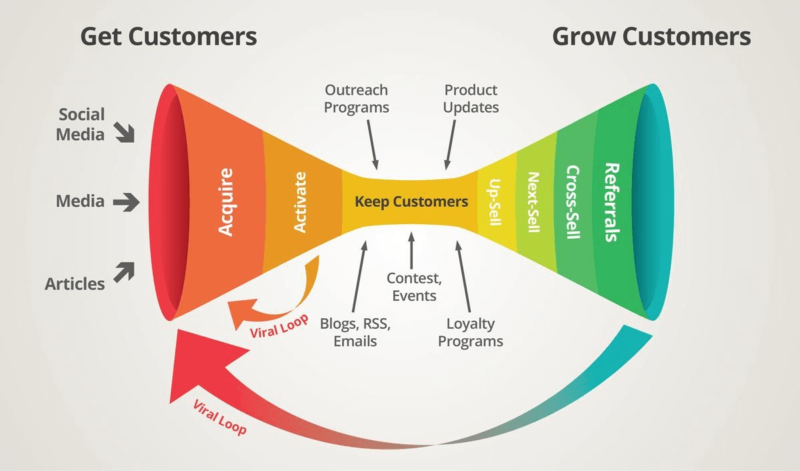
As you can tell, keeping customers (the middle portion of the lifecycle) is a stabilizing part of the process. The real revenue begins to come in as you grow your customer base, which allows you to upsell, next-sell, cross-sell, and gain referrals from your existing network.
Remember, in today’s world of subscription-based services, loyalty is never guaranteed. Customers are apt to leave for a more cost-effective option or flock to the new competitor that’s offering something innovative which hasn’t been seen before.
The key to growing your existing customers must involve providing added value on top of just the benefits of your products or services. The way you do that involves providing stellar customer service—at every step of the process.
4 key avenues of customer service that’ll help you increase customer retention
By phone
Though phones sometimes get called old-fashioned, it still stands as one of the most personal forms of customer service a business can provide.
Not everyone is comfortable chatting with a faceless name online, and the phone allows you to convey much more personality compared to texts or chats. In fact, 86% percent of customers said that if there was an emotional connection with a customer service agent, they would be willing to continue to do business.
What situations call for using the phone?
Customers looking for personal answers to their unique problems need phone-based interactions. It’s fast, it’s immediate, and in most cases, the customer gets their answer pretty quickly (compared to, say, waiting for an email response).
That being said, you still have to offer tailored responses and treat every customer like they’re one in a million to keep the customer personally invested. (This is one of the biggest advantages that a small business has over a giant corporation—you’re more likely to remember your customers and build those personal relationships. Use that advantage!)
No one likes being spoken to like they’re just a number. In fact, 52% of customers are likely to jump ship if a business doesn’t make an effort to personalize their communications.
In other cases, some of the questions that customers have might turn out to be complex or urgent issues that are much more easily explained verbally (rather than through written explanation). The two-way dialogue that unfolds offers an opportunity for you to go beyond just providing an answer. Plus, you can make suggestions and upsells along the way that actually feel natural and not like an unnecessary add-on (in the way that an extra unrelated email might, for instance).
Types of businesses that should be providing this:
Online businesses that don’t have physical locations should take special note to offer customer service by phone. Even though, yes, you’ve made it extremely convenient for the customer to find what they need online from the comfort of their home, when a problem arises, they want to know that convenience isn’t a trade off for personalization or immediate answers. One-on-one communication with a real person is not only practical, in this case, it provides peace of mind.
What tools can I use to provide the best phone service?
A cloud-based contact center like RingCentral has a web-based phone system, which offers so much more than a traditional physical phone can, and that’s true for both your team and your customers:
Agents aren’t tethered to a single location and can answer calls on any device. The experience for the customer is much more directed and meaningful (fewer transferred calls and less time spent waiting) since agents can see their entire communication history of the customer with the business and can pick up exactly where the customer needs them to be with the right information already in hand.
This is important because according to research, waiting on hold is one of the biggest annoyances that customers have with companies:
Did you know that you can build scripts with RingCentral for agents? This helps them provide helpful, tailored cues every time and guarantee consistent customer interactions.
An example of customer service by phone in action
Carvana is an e-commerce platform that offers car sales and home delivery. Back when they were using a PBX system, they had issues with customers calling staff on their personal phones, and when they did, they weren’t calling the right individual who was equipped to answer their questions. So, Carvana decided to centralize all their inbound calls to a business line and route them strategically to the right agents (instead of transferring them several times). This provided a much better experience for their customers and enabled the team to keep their personal lives, well, personal:
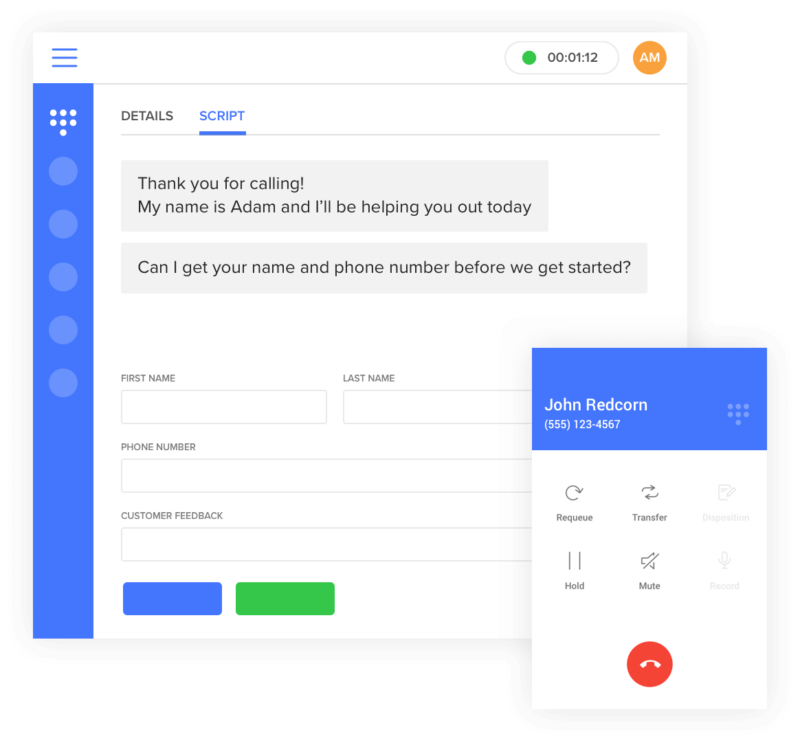
By email
Email is another form of communication that’s been around pretty much since the inception of digital customer service. That’s not to say there’s isn’t still a time and place for it today. To extend an existing customer’s lifetime value with you, using email campaigns to upsell or cross-sell while incorporating value-added information (like a link to your blog on their topic of interest) is a no-pressure way to keep in contact while promoting your business.
What situations call for using email?
Customers tend to reach businesses by email when their situation is not urgent. This makes it beneficial for businesses to have email as one of their primary modes of contact, since it helps them deprioritize the immediate response of incoming requests.
For the most part, customers who email you are likely more willing to wait a few hours or even up to a day for a response back (but just in case, it doesn’t hurt to send an automated email back to let them know they can expect a response from you within X hours).
This gives you breathing room to formulate the right response, particularly if the matter is a delicate one (such as dealing with an overwhelming customer complaint, where you might benefit from partnering with the sales team to offer future discounts or credits back).
Types of businesses that should be providing this:
Businesses that deal with an international customer base should welcome email as a means of staying connected with customers since it doesn’t place pressure to respond during times that are impossible (especially for small businesses with a local team).
B2B businesses whose customers expect more detailed and thought-out answers to their questions can also benefit from leaning on email. Unlike direct consumers, these customers have the time to sift through technical information and thorough explanations.
What tools can I use to provide the best email service?
Managing a string of incoming emails with a single address can be a nightmare—especially when your inbox starts to pile up quickly. We recommend using an email helpdesk software, like HelpDesk, which uses a ticketing system to help you organize your emails and share statuses with your customers about the progress of their ticket. You should also look out for email tools with built-in analytics, which can measure things like response times and time spent on tickets so that you can continue to track and improve on these metrics.
An example of customer service by email in action
When a customer wrote to Archival Clothing noting their high shipping costs, the customer service agent took the time to do some research to find the best rates that could potentially work for them. They were flexible in their approach and went above and beyond, providing recommendations on how to best meet the customer where they were. The bonus of corresponding over email was the added benefit of time, which allowed the rep to pull together the information needed to gain a happy customer:
Through live chat
Live chats are direct forms of communication that happen near instantaneously. As an add-on to a business’s website, anyone can click to start a chat with an agent within a few seconds or minutes. On the other end, agents can hold multiple conversations at once, and even automate common responses with chatbots and AI to focus their energy on higher cognitive tasks.
What situations call for using live chat?
Live chats are a powerful tool to move customers along the lifecycle and promote conversion. They’re there to resolve issues that happen right before a purchase gets made and can provide customers the information they need to make their purchase with confidence. In fact, 61% of businesses cited increasing sales and conversions as their primary reason for offering live chat support.
Types of businesses that should be providing this:
Businesses that offer services that deal with highly personal or private services—such as financial management, insurance, real estate, or healthcare related services. These types of businesses require an extra layer of credibility and reliability to gain the trust of potential leads. Being available when they need you helps you earn that. Often, customers will need personalized support in order to choose the right product for their unique situations.
What tools can I use to provide the best live chat service?
Beware that a poorly designed, slow, and clunky chat screen is going to deter a lot of people from using your chat to begin with. A good live chat tool will allow you to customize the look for your chat windows using your brand’s visual identity so that it fits seamlessly onto your site.
You can do this using RingCentral, plus, you can provide proactive support by triggering a live chat invitation based on your website visitors’ behavior (for instance, you can set a rule so that if a visitor hovers on the checkout page for longer than 10 minutes, a chat appears asking if they need any help).
An example of customer service through live chat in action
Canyon Bicycles includes a live chat option built right into their toolbar for visitors’ easy access. With an international consumer base, they offer bilingual support and use intelligent routing to connect customers with members of their customer support team who can assist in their language of choice:
Through social media
Digital is growing in all realms of businesses—when it comes to customer service, that’s no exception. 67% of consumers now use social media networks like Twitter and Facebook to seek resolution for their issues.5
Having a presence on social media not only lets customers reach you through another avenue, it also offers a neutral space for them to share information, which you can turn into insight on how to improve customer pain points or lean into actions that create moments of delight.
What situations call for using social media?
Similar to email, as a method for customer service, social media is available 24/7. It can be more powerful, howerever, with exchanges on social media taking place in “public.” This is a double edged sword. On one hand, it gives users the ability to form communities and respond to each other’s questions, reducing the amount of support resources required on the business side. On the other hand, angry customer complaints (even ones later resolved through private chat) remain on the channel for others to see, potentially causing bias in others’ decision to make purchases later on.
Types of businesses that should be providing this:
New B2C businesses that are acquiring customers for the first time should seek to grow their digital presence by getting on social and converting visitors to followers, to whom they can eventually sell.
Word of mouth spreads like wildfire on these channels, and social proof is built right into the tool itself. Keep your page relevant with engaging and timely content, and be sure to follow up with every customer that reaches out to you with some type of response. Speaking of, you’ll probably need a way to track all these interactions across multiple social accounts…
What tools can I use to provide the best social media service?
Ideally, you should have at least one dedicated team member monitoring digital engagements happening across your social media channels. To do this efficiently, invest in a unified communications tool like RingCentral Engage Digital™ to house all conversations on a single pane of glass so that you can monitor them simultaneously.
Added advantages of RingCentral is the ability to merge together digital and social identities into a single customer profile, as well as leverage the power of AI to classify and route posts to the right person in customer service, marketing, or sales.
An example of customer service through social media in action
Common questions Walmart customers have are shared on their Facebook page and are answered through contributions from other members of the businesses’ community. Learning that price matching is a common point of confusion amongst their customers, Walmart gains valuable insight on how to resolve this pain point more proactively in the future:
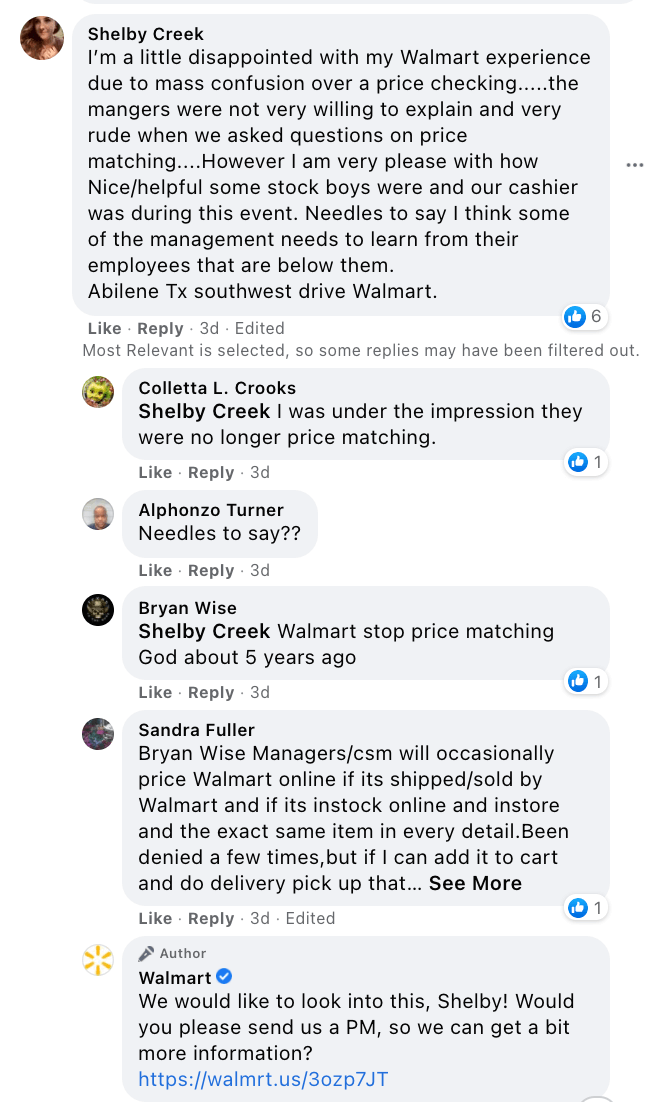
Maximizing your customer lifecycle journey
If developing strong relationships and loyal brand advocates is your goal as a business (as it should be), then maximizing customer retention needs to be top of mind.
Stellar customer service can help facilitate interactions across the entire lifecycle, meaning that in addition to converting leads to customers, it can help you increase your customer lifetime value overall.
The type of customer service you opt for will depend on the size, scale, and available resources of your business. If you’re just starting out, then options that don’t break the bank, such as email and live chat might make the most sense. As you grow, consider investing in a tool that allows you to reach your customers in a number of different ways at once so you can streamline your communications and more effectively convert one-time buyers into loyal customers.
Updated Mar 13, 2025










